Small Kitchens
Tools for Possibilities: issue no. 84
Once a week we’ll send out a page from Cool Tools: A Catalog of Possibilities. The tools might be outdated or obsolete, and the links to them may or may not work. We present these vintage recommendations as is because the possibilities they inspire are new. Sign up here to get Tools for Possibilities a week early in your inbox.
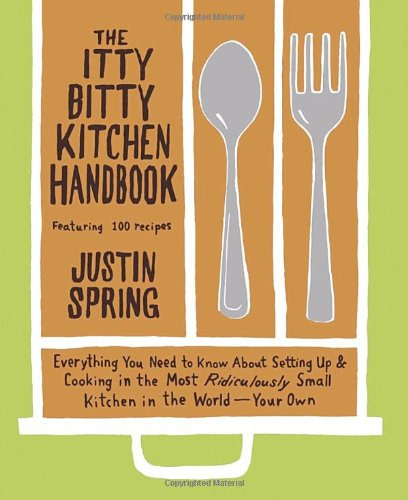
How to cook in small spaces
The Itty Bitty Kitchen Handbook
I happened across The Itty Bitty Kitchen Handbook at the local library, and the subtitle (“Everything you need to know about setting up and cooking in the most ridiculously small kitchen in the world: Your own”) caught me instantly. The cute cover suggests charm over content, but the book itself doesn’t waste a paragraph. It’s pithy, insightful, inspiring, and entertaining.
Justin Spring grew up on a boat, with a kitchen even smaller than mine — essentially a camp stove, an ice chest, and a bucket. He has huge insight into the problems of small kitchens, including the “shut-off point” where clutter stops most food preparation and the local takeout place gets a lot of business.
He is not hesitant to make solid, practical suggestions, and includes websites for sourcing. He weighs in on everything from the best tool cabinet to repurpose for a kitchen, to the best sources for cheap, lead-free, by-the-stem crystal.
This is a truly holistic guide to getting the most possible use and enjoyment from a tiny kitchen. It includes 100 recipes tailored for the small kitchen (“one-pot, toaster oven brownies”).
I have only had this book for a week, but it has inspired one full day of kitchen cleaning (!) and doubled the number of meals I eat at home. It is not comparable to anything else I’ve seen, either on the web or in print: no glossy photos of gleaming granite countertops, no vague, sentimental, market-friendly prose. The closest thing I’ve seen was Mark Bittman’s guide to stocking a minimalist kitchen, but that was four pages and this is over two hundred.
If you are struggling with a tiny kitchen and have almost given up on eating at home, this book is a lifesaver. If you want to eat well, eat healthily, entertain occasionally, and generally live like a normal person despite your itty bitty kitchen, I can’t recommend it enough. — Tricia Postle
And Also A Quick Word about Blenders
The best new blenders will now do the work of mixers and food processors– and in itty bitty kitchens, where limited counter space cuts down on the possibilities for countertop appliances, multitasks of this sort are particularly valuable. Nearly any blender will do for basic blending tasks (for ten years I managed very well with a used bar blender purchased for $5 at an Episcopal Church tag sale; I have no doubt it blended up many a daiquiri before it came into my life.)
- The Refrigerator
Consider washing out your refrigerator interior with a deodorizing solution of baking soda and water and (after unplugging the appliance) cleaning the coils on the back– they attract dust, which interferes with the refrigerator’s ability to cool and thus drives up your energy costs. If the refrigerator has wire shelving inside, install sheets of plexiglass over them– they will clean up easier, and your food items won’t topple over so much. Just take the measurements to a hardware store and have the inexpensive Plexiglas cut to order. - Arrange it in a cook-friendly way. Try consolidating all your food into one cupboard or area so that you know what you have at a glance, and keep that list of your staple items handy—preferably in a clear plastic sleeve on the cupboard’s inside shelf. In elevated cabinets holding many small items, consider buying stepped shelving for visibility all the way to the back. (Incidentally, you canmake your own stepped shelving by cutting 2 x 4 lumber to fit, stacking it as needed.) If you are a short person (or your cabinets are up high), consider buying yourself a foldaway step stool so that you have access to every last inch of IBK space.
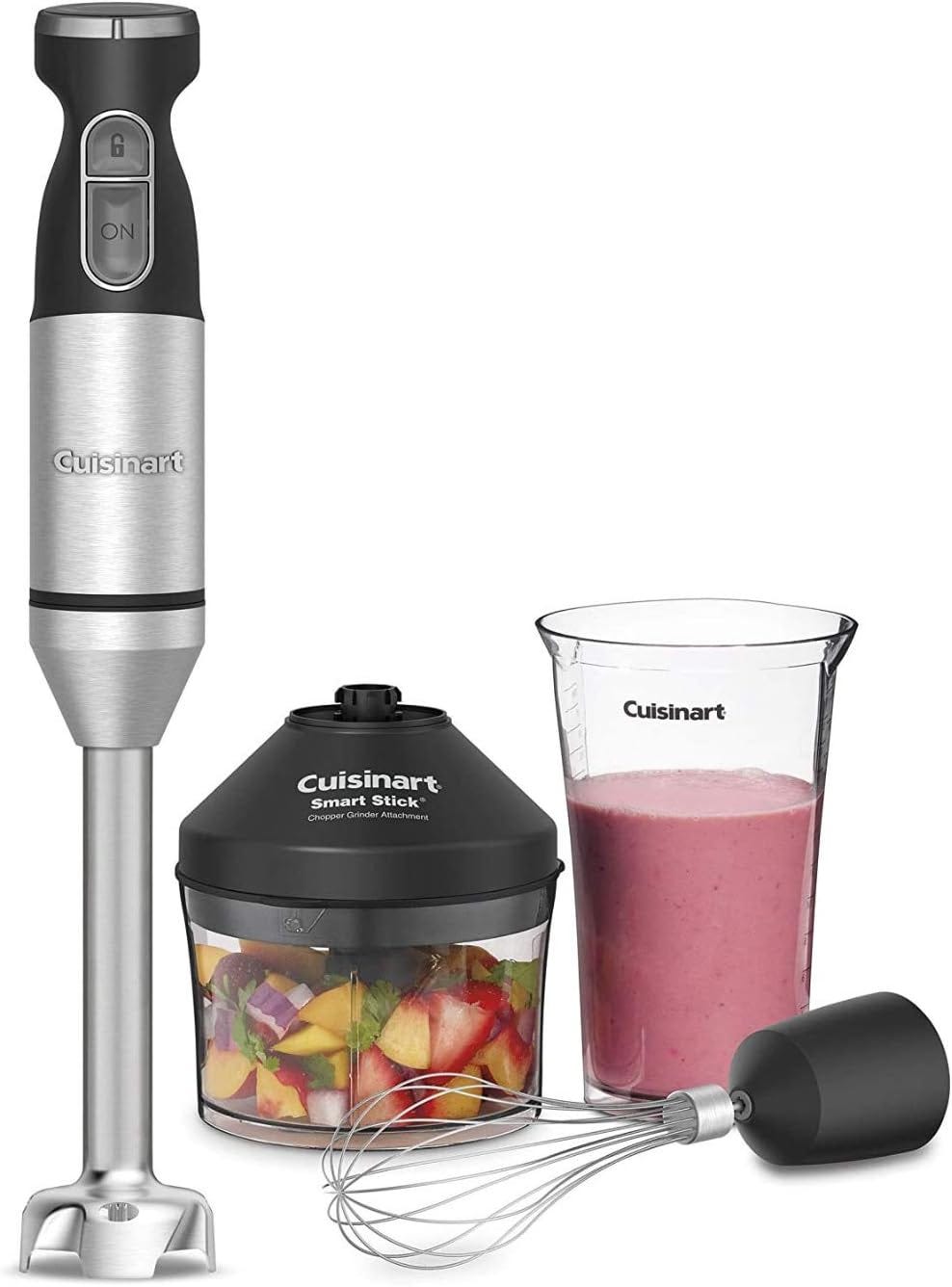
Better than a blender
Cuisinart Smart Stick Hand Blender
I hate most kitchen gadgets with a passion. Seeing things like an avocado slicer, mango corer, or left-handed inverted egg whatsizinger give me the hives. For the longest time, I prided myself on being able to do the most with the least in the kitchen.
I’m saying all this because I wanted to convey just how hard it was to buy the Smart Stick a year ago on the recommendation of my wife. Normally blenders are hard to clean, bulky, loud, and can only be used for low-viscosity liquids; if the mixture is too thick, the blade just whirs uselessly.
The Smart Stick solves all that. It takes up virtually no space. It is easy to clean. Instead of scrubbing out a blender, you just pop off the Smart Stick’s head, so it can be cleaned in eight seconds under running water. It’s impressively powerful and can be jammed full force down into a glass of ice to chop it up quickly. Yet, it’s still much quieter than a blender. The measuring cup it comes with is also well designed to break up the vortex the blender creates.
The Smart Stick is the cheapest and most basic hand blender I could find. Others come with whisks and choppers and brushed metal finishes, but I think the regular head works just fine. I found that the Smart Stick did 150% of what I’ve used a blender for and 75% of what I used a food processor for.
It’s very versatile. No more “pour boiling hot broccoli soup into blender to cream it, then pour back into pot.” You can use the Smart Stick right inside a stockpot on the stove. You can use it on thicker foods because you can stir and mash while blending, continuously bringing new material into the blade as opposed to a stand blender’s reliance on gravity to find unblended parts.
Making hummus, salsa, applesauce, and pesto went from “giant mess” to “easy.” Making smoothies went from “big production” to “two minutes.” Guacamole and whipped cream turn out wonderfully smooth. Margaritas can be made right in the pitcher. Almond butter can be made without too much trouble. I imagine this would also be a lifesaver for making baby food.
There are some downsides: It only has one speed (high!), so you have to be careful and use it in bursts if chopping ice, as it will happily sling iced coffee circumferentially around your kitchen in a ten-foot radius if you get too enthusiastic. You also have to be careful using it with plastic bowls as the metal head can punch through the bowl bottom if you push it too hard. The blade is SHARP. It’s not really suitable for use by children (or klutzy adults). If you need to clean around the blade’s backside with a finger, REMOVE the head from the motor first.
Again, I really really wanted to hate this thing and didn’t buy one for the longest time because I considered it useless. Now it’s the only electric kitchen tool that remains permanently plugged in on my counter other than a Kitchen-Aid six-quart mixer. — Jon Braun
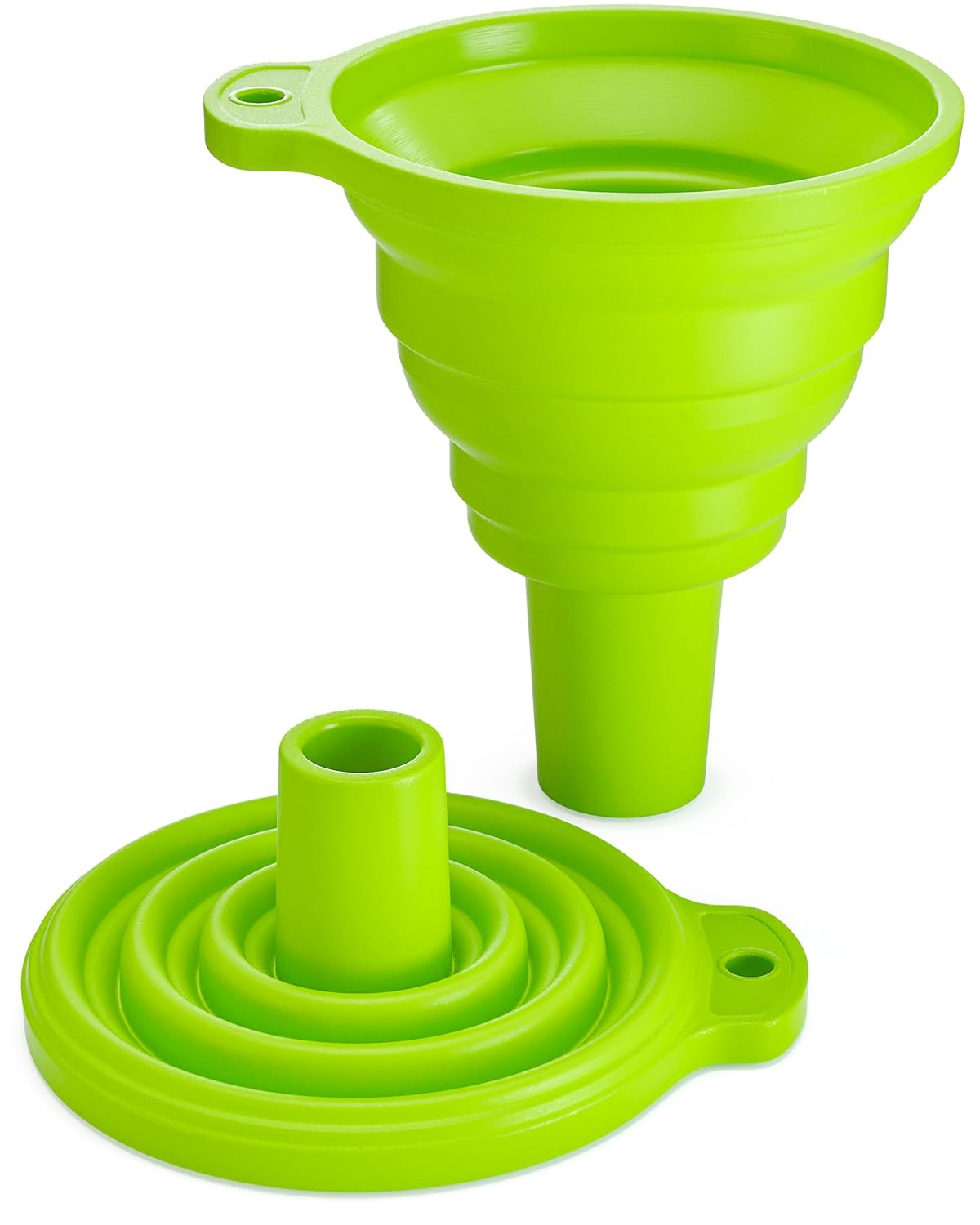
Space saving funnel
My kitchen is on the small side, which means every inch of space must be efficient and tidy. While most funnels are bulky and take up valuable room, this one is compact enough to fit in a studio-size kitchen or be a welcomed addition to any camping pack.
The accordion-style pleats not only allow you to collapse the silicone funnel so it fits neatly even in a shallow drawer. The pleats also allow you to adjust the height and width of the funnel for pouring into various-sized containers.
Since the funnel is made of high-quality silicone, it is dishwasher safe and heat and cold resistant, making it more durable and longer-lasting than plastic funnels. Other potential uses: changing your car’s oil or adding washer fluid. If you plan to use it in the garage, of course, I’d recommend getting a second one. — Kelly Spitzer
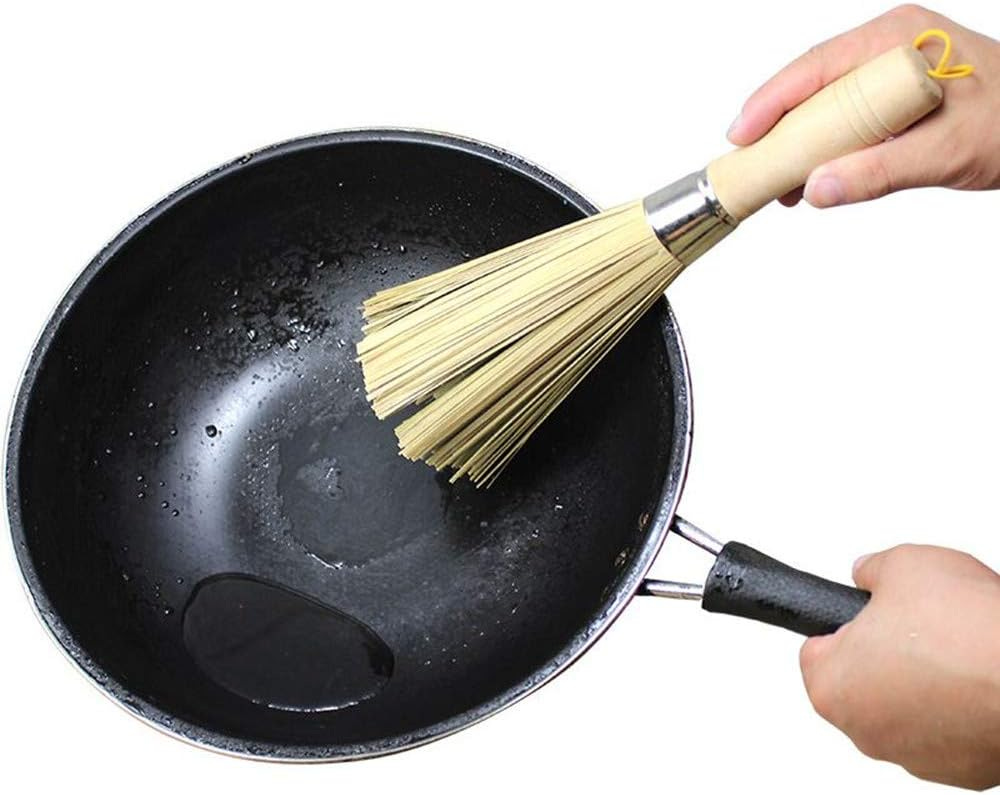
Easy, no-soap wok and pan cleaning tool
I use well-seasoned cast iron and carbon steel pans for the better part of my cooking. To clean them, I’ve used the same bamboo wok brush I bought at a corner market in Sacramento in 1990. I’ve been thinking of buying a new one, just so I can phase it in over a few years while I slowly retire the original. It only takes a few swishes around the inside of the pan with hot water (no soap!) and a rinse to clean a pan. In the time I’ve been using it on my iron and steel pans, including the wok I use occasionally, I’ve gone through countless sponges, scotch-brite pads, and those looped-plastic scrubbies that I use on stock pots etc., all of which get pretty hinky once put into use and have to be run through the dishwasher to get free of food particles. It also looks dignified and fine sitting on the countertop by the sink, has just gotten more seasoned, and never needs more than a rinse to get clean. The edges of the cane bristles are pretty blunted by now and a new one might work better for attacking the occasional nuclear cooking mess. On the other hand, it’s gentle enough on the built-up seasoning in my pans that they keep getting non-stickier and shed scorched cheese like schmutz on teflon.
The brush I bought way back when has flat bristles, about 11 inches long by 3/16 wide, and stouter than most of the wok brushes I’ve seen recently in Asian groceries. I can’t imagine that there’s been much innovation in wok brush technology in the last 3000 years, but quality is probably inconsistent on an item like this, even from the same seller. Unless you have access to Asian markets and can shop around while you’re out making your weekly durian run, Amazon has a variety to choose from, all about $7.50 with shipping. The Wok Shop seems to be reputable, but it might be prudent to order a few just in case yours only lasts as long as a good hamster. — Brian Garber-Yonts
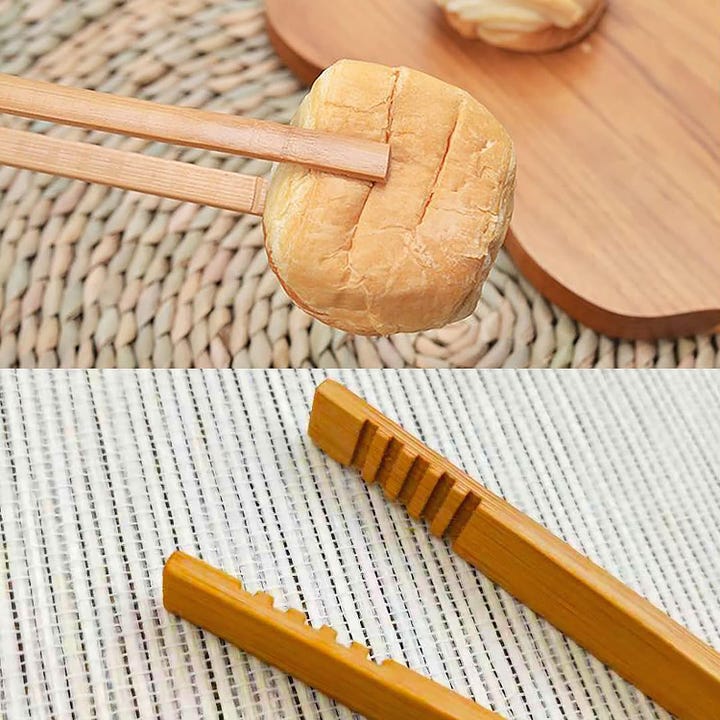
No more burned fingers
My wife brought home a pair of bamboo toast tongs from a “Pampered Chef” housewares party, and I’ve been surprised at how useful they are. We have a standard toaster, and also make homemade bread in small pans. I hadn’t realized how many times I’d been burning myself on the toaster or what a hassle removing smaller slices had been until I started using these.
I guess I find the concept more useful than any particular implementation as I imagine that the adept use of chopsticks would serve the same function. — Mark Crane
04/29/24





